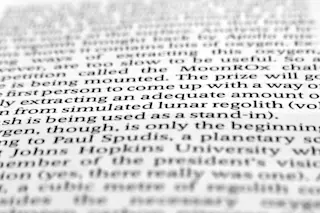(Credit: Shutterstock) Here's a sentence. Here's another one. Notice anything? If you're like me, you're probably rolling your eyes right now. Using two spaces after a sentence seems to serve no other purpose today than to signify that the typist probably learned their keyboard skills in another era. And it's pretty annoying, to boot. Nevertheless, there's a minority of purist (or simply contrarian) keyboard warriors who hold that the two-space rule is actually the right way to go. Indeed, no less an association than the American Psychological Association in its manual recommends using two spaces "for ease of reading comprehension."
Those fretful few just got some good news. A new paper from three researchers at Skidmore College provides some (extremely mild) evidence that adding a little breathing room between sentences could help readers process information they read. The scientists had 60 students read a number of passages while they tracked ...














